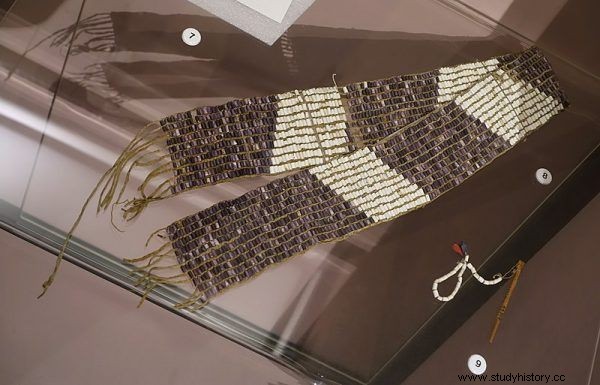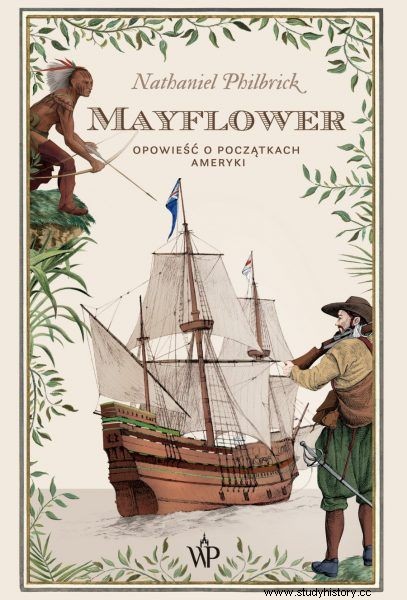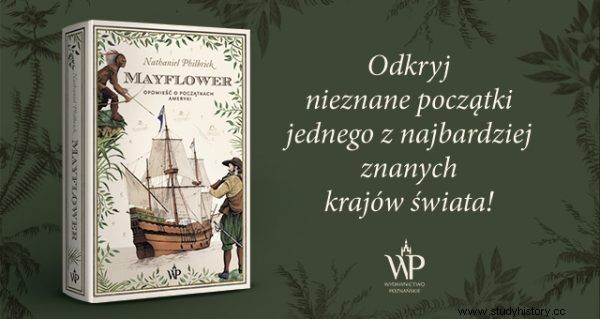Early Europeans looked down on cultures that did not consume money. Beads, beads and other means of exchange were treated indulgently, and the ignorance of the ore currency was ruthlessly exploited. But is our system really better? Not always. The first colonizers of the New World found this out.
When the Pilgrims, English Puritans seeking happiness in the New World, arrived on the shores of America in 1620, in addition to food supplies, they also had items intended for trade with the Indians. "They brought necklaces, beads and other goods to exchange with the Indians for fur and grain," writes Nathaniel Philbrick in his new book Mayflower. A Tale of America's Beginnings ” .
Of course, the founders of the first English colony had other goods that turned out to be a good payment for the indigenous people of the continent. The Indians were happy to sell the skins of the hunted animals for iron tools or utensils - hoes and cauldrons, as well as blankets, muskets and - of course - alcohol.
New World Currency
The trade between pilgrims and Indians was revolutionized only after reaching for the currency, also adopted by other immigrants from Europe, the Dutch. It was the so-called wampum , a belt made of beads . In the New Netherlands, wampum has become a common medium of exchange. Anyway, it was one of the Dutch trade agents, Isaack de Rasiere, who convinced the English to accept this solution.

White and purple beads were used to create the vampum.
From then on, New England Puritans also used the elegantly intertwined Indian beads as money. And it was by no means as trivial to prepare and as crude as we were always told. Philbrick in "Mayflower. A Tale of America's Beginnings ” says:
Wampum consisted of strings of cylindrical beads made of the white shells of the periphery and the blue parts of the shells of Icelandic cyprin. The purple shells were worth about twice as much as the white ones. In order to be able to pay with them, the wampum had to meet strict requirements . Over time, the English learned as adept as the Indians to judge whether beads were properly cut, shaped, polished, drilled and strung.
A drug in times of crisis
The beads stayed in the colonizers' "wallets" for good. They even used them to pay for land purchased from indigenous peoples. The area of the future town of Reheboth was purchased, for example, in 1642 for ten fathoms of beads, although Massasoit, the chief of the Wampanoag, reportedly demanded ... a coat.
The transactions at this stage were still quite informal, and the prices - which seem shockingly low today - were entirely discretionary.

The curiosity is based on the book by Nathaniel Philbrick, Mayflower. A Tale of America's Beginnings ” , which was published by Wydawnictwo Poznańskie.
The moment has come, however, when also the visitors from the Old Continent appreciated the stability and value of the "primitive" American currency. The colony, which was unprofitable especially at the beginning, repeatedly used loans. Funds for further activities were obtained in a distant homeland. The crisis came when these opportunities suddenly disappeared. As Philbrick writes:
When it was difficult to get loans in England during the 1740s crisis, the colonies eased New England's financial difficulties by using the vampum as legal tender . In this case, the Indians gave the English the opportunity to use the American way to do business.
So there was a time when the founders of the United States also exchanged shell beads with each other. And it was them, and not the money that European culture is so proud of, that allowed the colonizers to survive.
Source:
Trivia is the essence of our website. Short materials devoted to interesting anecdotes, surprising details from the past, strange news from the old press. Reading that will take you no more than 3 minutes, based on single sources. This particular material is based on:
- Nathaniel Philbrick, Mayflower. A Tale of America's Beginnings , 2018 Poznań Publishing House.
Buy the book at a discount on empik.com

